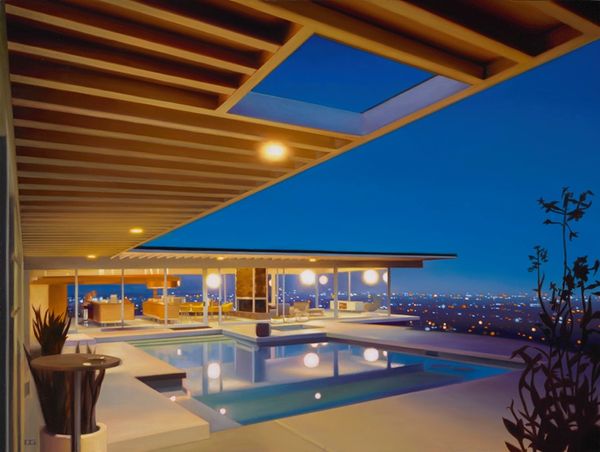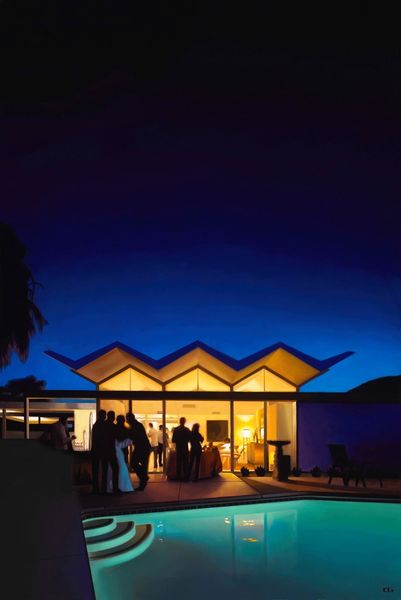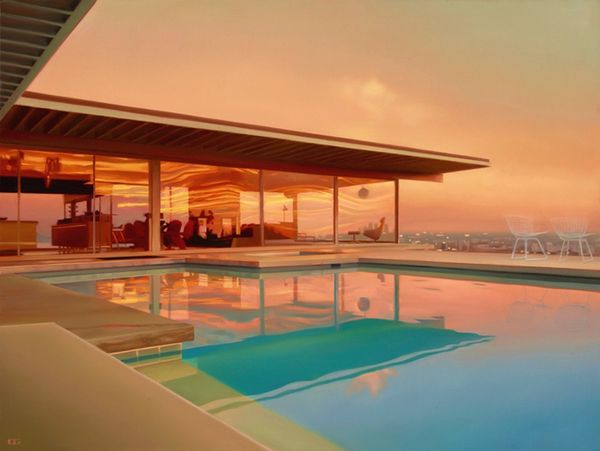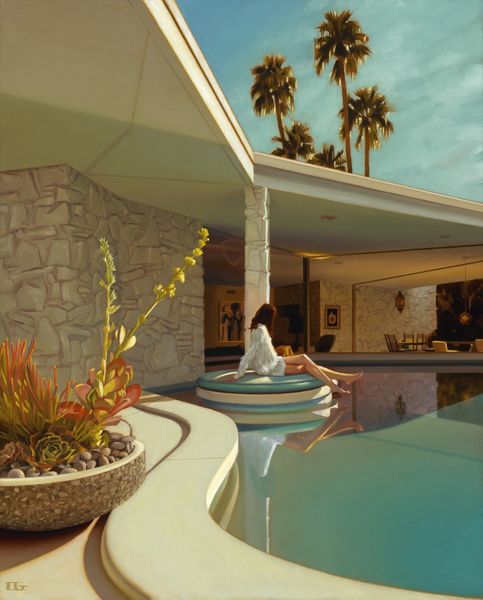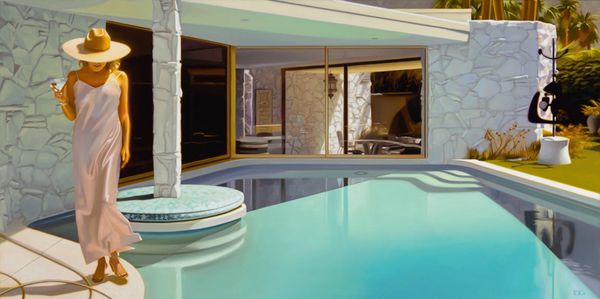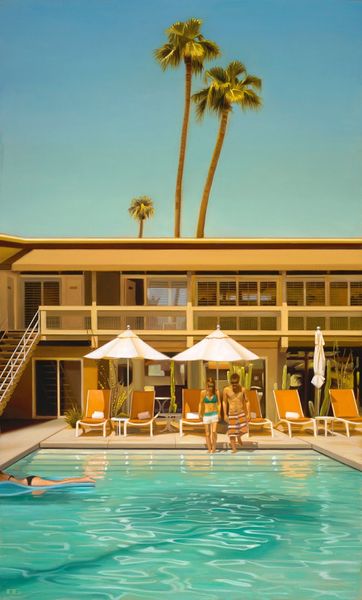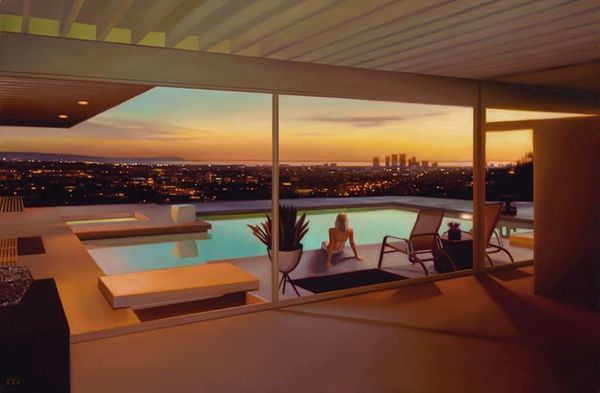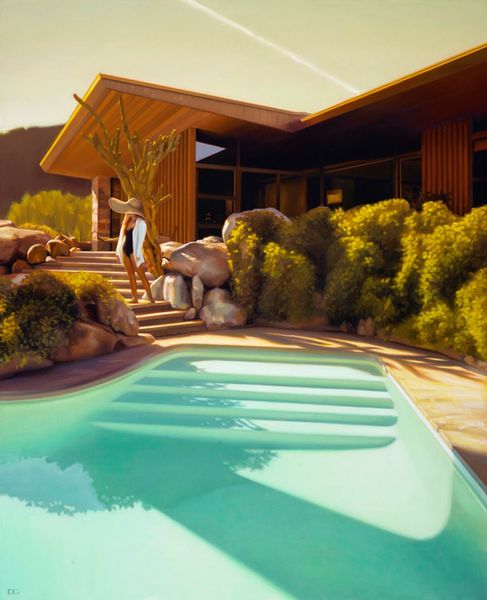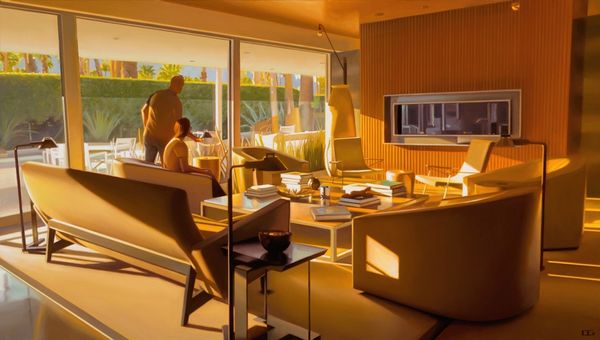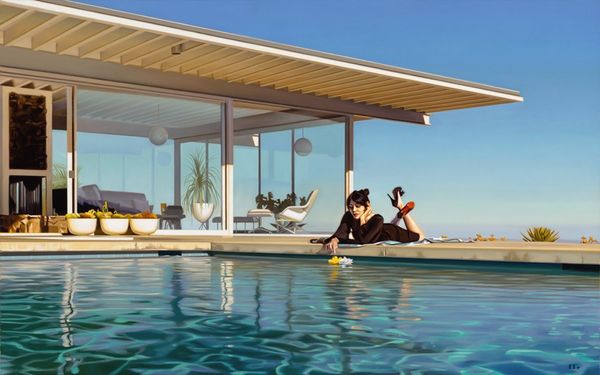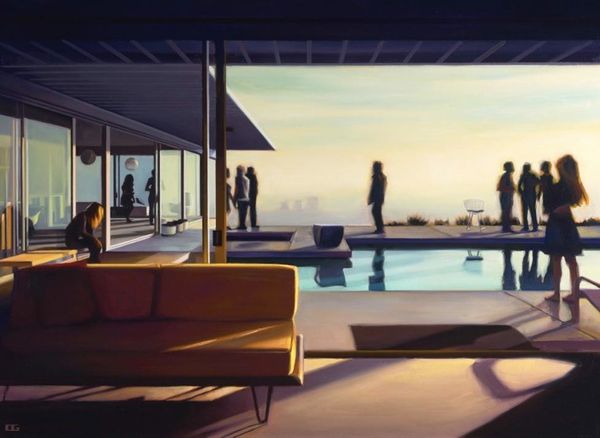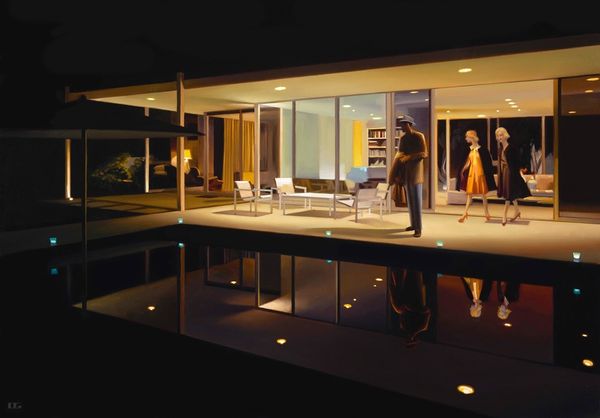
painting, acrylic-paint, architecture
#
contemporary
#
painting
#
landscape
#
architectural photography
#
acrylic-paint
#
cityscape
#
architecture photography
#
modernism
#
architecture
#
realism
Copyright: Modern Artists: Artvee
Editor: We are looking at Carrie Graber's painting, "Martini Party," from 2020, rendered in acrylic on canvas. It depicts an architectural landscape, probably somewhere warm like Southern California, populated with partygoers. What draws my eye is the composition's tension between stillness and implied movement, underscored by the artifice of the scene. What's your read? Curator: I see a pointed commentary on production and consumption within the upper class, readily apparent in the construction and presentation of the "scene." Look closely at the means of production evident in this painting: the sleek, modernist architecture that screams material wealth, the sheer quantity of resources it took to put a gathering of this size together. Consider, also, the labor required to produce and maintain such a lifestyle of leisure. Does Graber's attention to architectural photography further heighten or flatten the social commentary? Editor: I think using painting flattens it, actually, compared to actual photography of the same thing. Like it adds a layer of... removal. Does that make sense? Curator: Precisely! It adds to the level of artifice, drawing attention to the constructed nature of wealth itself. What might the repetitive shapes -- that circular pool, the cylindrical glasses, the almost boxlike construction of the home itself -- tell us about the standardization of luxury in the 21st century? It's not just that it exists, but that it's reproduced. Editor: I hadn’t thought of it that way, but it's all so curated. I guess the painting's success lies in making us aware of how literally things are made, like that pool. It’s about art and artifice blending together. Curator: Exactly. The painting forces us to confront not only the material realities of wealth but also the invisible labor and resource consumption that enables it.
Comments
No comments
Be the first to comment and join the conversation on the ultimate creative platform.
